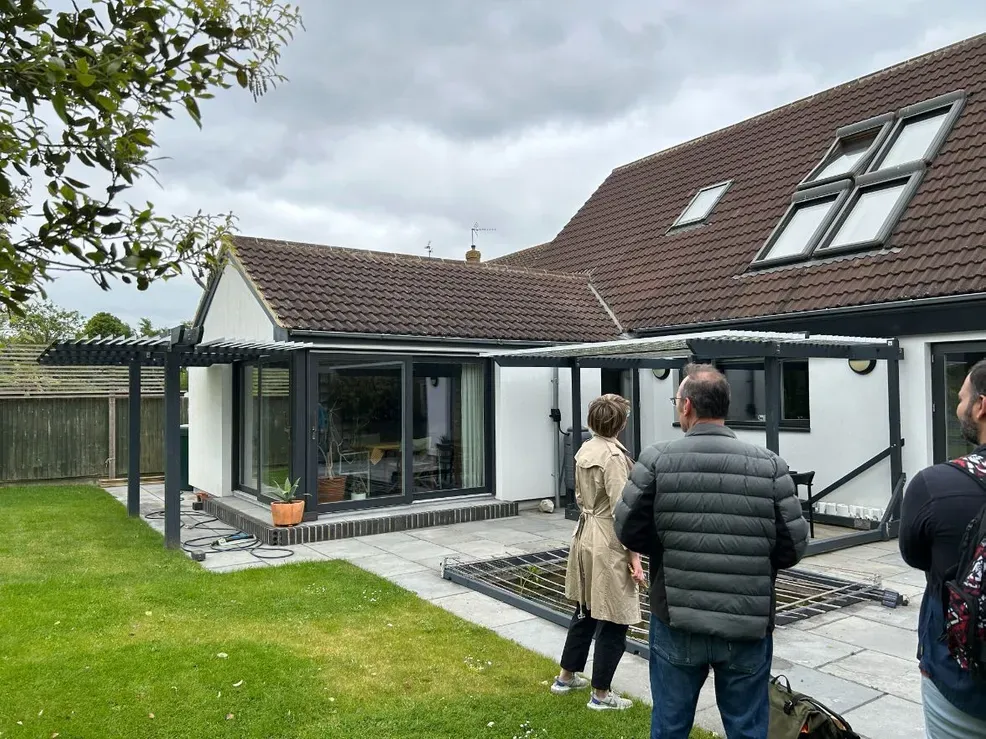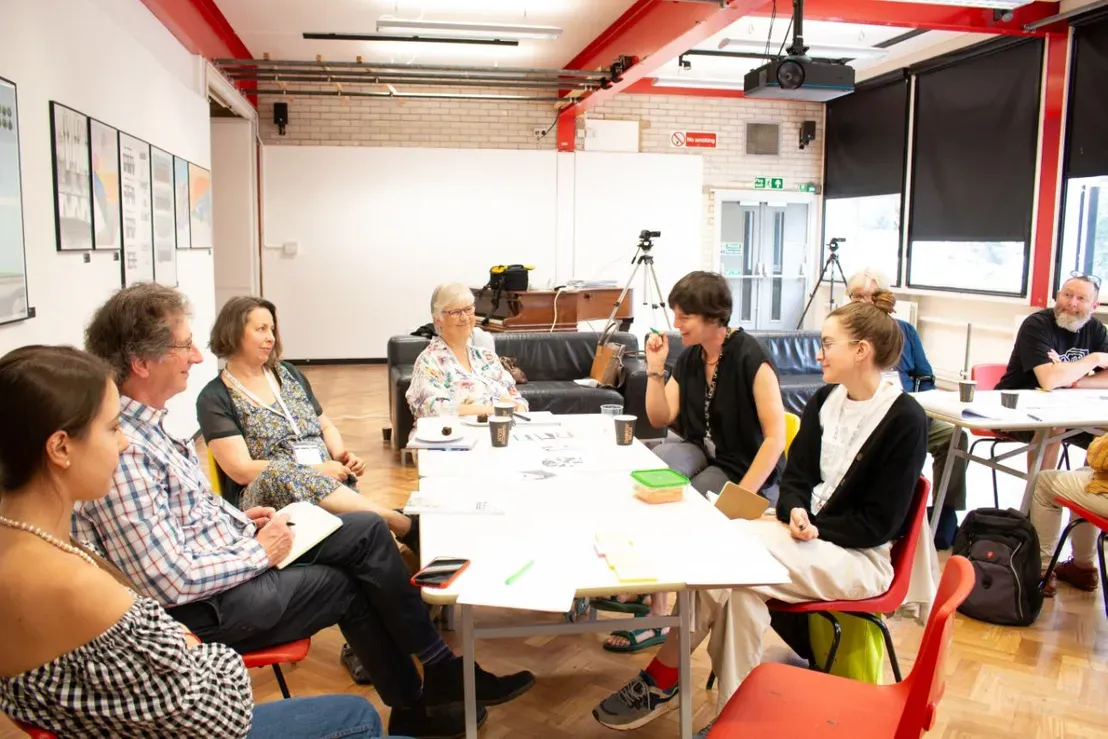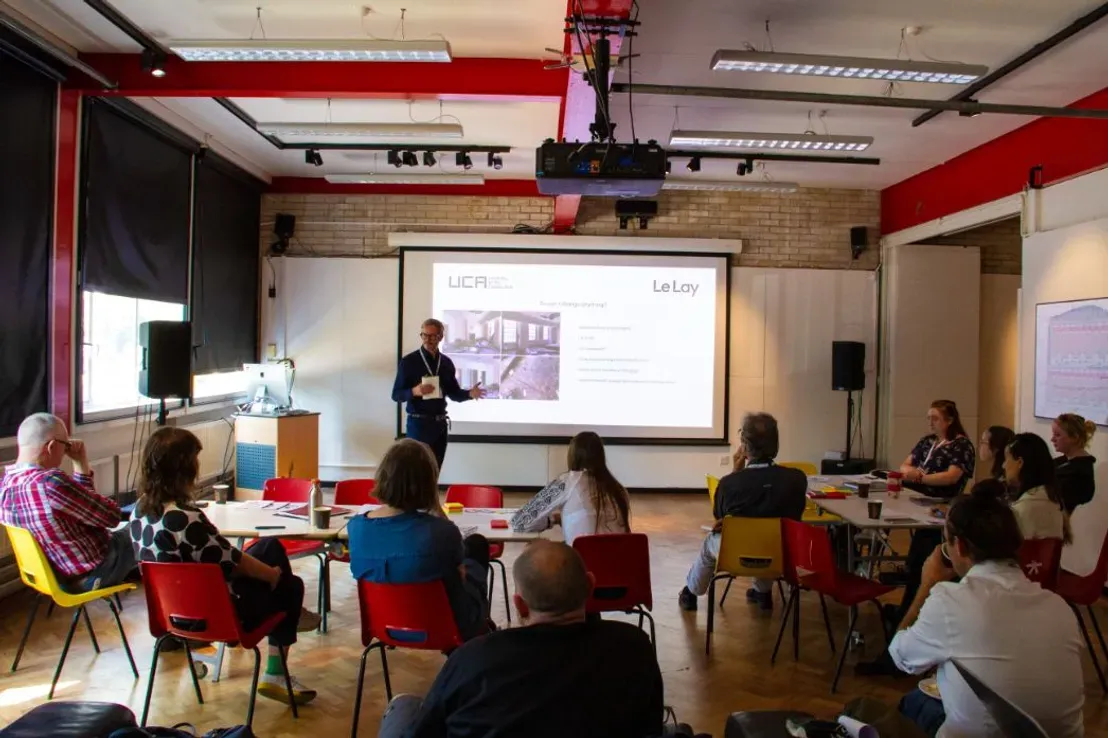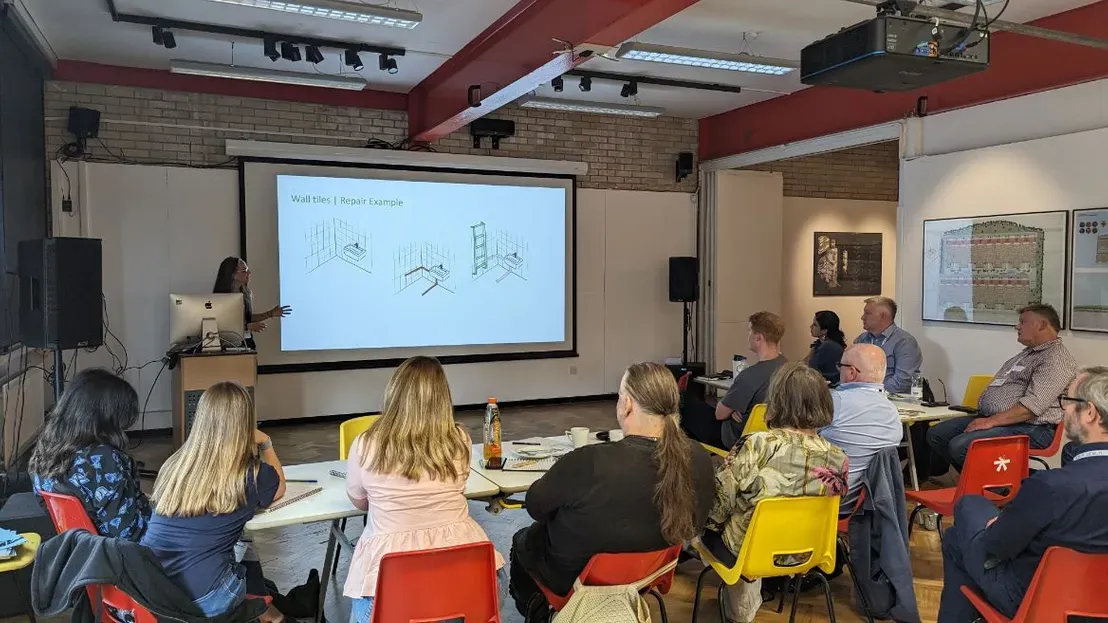Facilitating the Adoption of Domestic Retrofitting in Canterbury and East Kent
What are the hurdles and challenges facing homeowners, architects and designers when it comes to making existing homes more sustainable and eco-friendlier, and how can they be overcome?
This was the question posed by UCA’s Architecture & Design researchers when they launched the AHRC Design Accelerator funded Zero Carbon Home Retrofit project.
This project, led by Sam McElhinney (PI), and coordinated by Dr Heba Sarhan, connected Canterbury homeowners with architects, retrofitting and construction professionals to encourage implementing energy efficiency and carbon reduction solutions in existing housing.
Through a series of public workshops and design guides the project helped homeowners better navigate the often-complex range of retrofitting options, and help achieve local carbon neutral targets.
The project aimed to help accelerate the region’s ability to effectively retrofit domestic building stock with two main aims.
Policy and environmental aims
- Help change planning to help local level retrofit.
- Support Kent County Council and Canterbury City Council meet 2030 and 2050 carbon reduction and carbon neutral goals.
- Help reduce emissions from council-owned housing stock.
- Help homeowners understand and choose the best retrofitting design solution for their homes.
Social/environmental aims
- Explore the role of stakeholder and community-based initiatives in sustainable energy transitions
- Kickstart reduction in household energy expenditure over the long term
- Enable local business to provide retrofitting services, thus boosting the local economy.
- Helping start learning programmes around retrofitting.
The case of Canterbury and East Kent
The Canterbury District (including Canterbury, Whitstable and Herne Bay) contains around 50,000 dwellings, of which 5,000 are council housing stock. Of the total homes, circa 56% have an Energy Performance Certificate (EPC) of Band D or lower (CCC).
CCC has identified residential carbon emissions as contributing a third of the entire district’s total greenhouse gas emissions; with circa 10% of the latter originating from household heating and hot water alone. As such, increasing retrofit of existing housing in order to reduce energy usage and direct emissions has been identified as a key priority in the district’s transition to net zero.
/prod01/channel_8/media/research-and-enterprise/projects/retrofit-header.jpg)



